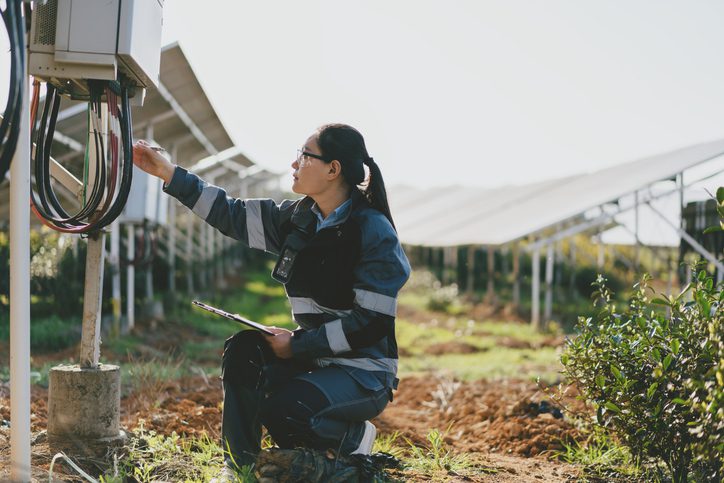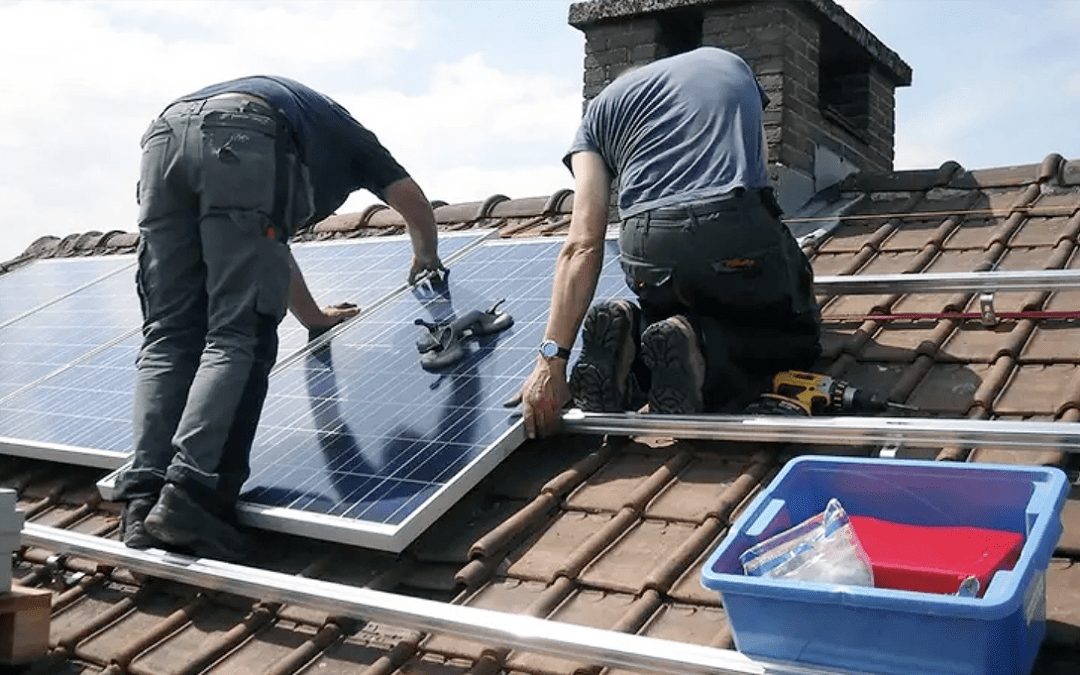The new standards will lead to “fewer asthma attacks, less heart disease, and longer lives,” said Amanda Leland, Executive Director of the Environmental Defense Fund. “The reality is clean cars will save kids.”
In one of the country’s most ambitious climate policies to date, the Biden administration on Wednesday issued regulations that would strictly monitor tailpipe emissions and push for electric cars to make up most of the nation’s new auto sales by 2032.
Under its Clean Cars rule, the Environmental Protection Agency (EPA) would implement a series of emissions requirements most easily met by electric cars, though it would be up to individual automakers to determine how to meet these standards, leaving room for continued production of hybrid vehicles and conventional gas-powered engines.
In a statement, President Joe Biden said the Clean Cars rule represented “historic progress” toward his administration’s goals of reducing carbon pollution by 50% by 2030—and fully eliminating it by 2050—without compromising American jobs.
“Hundreds of new expanded factories across the country. Hundreds of billions in private investments and good-paying union jobs,” he said. “And we’ll meet my goal for 2030 and race forward in the years ahead.”
Addressing the pollution that drives climate change
Carbon emissions from cars and other forms of transportation make up most of the country’s pollutants and contribute heavily to climate change, an increasingly urgent concern after scientists named 2023 the hottest year on record. The EPA says a typical passenger vehicle releases around 4.6 metric tons of carbon dioxide—a greenhouse gas—annually. Fully electric vehicles do not release tailpipe emissions.
Amanda Leland, Executive Director of the non-profit Environmental Defense Fund, pointed to the practical implications of electric vehicles for future generations in a statement.
“Today’s action will cut over seven billion tons of climate pollution—that’s more than all US greenhouse gas pollution last year,” she said. “It will slash deadly soot and reduce smog. That means fewer asthma attacks, less heart disease, and longer lives. The reality is clean cars will save kids.”
Earthjustice president Abigail Dillen echoed Leland’s sentiments. “These standards make clear what we already know: the future of cars is electric,” she said.
The move comes on the heels of Biden’s 2022 Inflation Reduction Act, a landmark law for climate action that provided $370 billion in clean energy incentives nationwide, including unprecedented tax credits for Americans who purchased electric vehicles.
Under the new rule, Americans could still buy used gasoline-burning vehicles and trucks. New regulations won’t apply until model year 2027, with the goal of electric vehicles making up 56% of all car sales in the US by 2032. The sales goal is ambitious, as electric cars comprised just 7.6% of new sales last year—a record number, but well below the 2032 target.
Nevada could become a top EV producer
In Nevada, electric vehicle production has taken center stage with the growth of clean energy investments and jobs under the Inflation Reduction Act. In fact, the state has received $12.2 billion in clean energy investments, leading to electric vehicle-centered projects like Tesla’s Nevada Gigafactory and expanded battery production and recycling operations through Redwood Materials. These investments, along with initiatives to incentivize clean trucks and buses statewide, position Nevada as a potential top producer in the electric vehicle market.
Despite the creation of nearly 16,000 new jobs in the clean energy sector under the Inflation Reduction Act, Governor Joe Lomardo withdrew Nevada from the US Climate Alliance last year, much to the dismay of climate activists. In January, he joined a group of 16 Republican governors who called on Biden to pull back the proposed Clean Cars rule in a letter.
“While we are not opposed to the electric vehicle marketplace, we do have concerns with federal government mandates that penalize retailers and do not reflect the will of the consumer,” the governors wrote. “Even with deep price cuts, manufacturers’ incentives, and generous government funding, federal mandates on electric vehicles are unrealistic.”
Trump attacks clean energy investments
Despite applause from climate activists and environmentalist groups, the Clean Cars rule faces political opposition. Donald Trump has vowed to repeal the Inflation Reduction Act if elected—including the act’s monumental electric vehicle credits.
Along the campaign trail, Trump has falsely referred to the Clean Cars rule as a ban on non-electric vehicles and disparaged electric cars themselves.
“Crooked Joe is siding with the left-wing crazies who will destroy automobile manufacturing and will destroy the country itself,” Trump said during a campaign stop last fall. “The damn things don’t go far enough, and they’re too expensive.”
The price of electric vehicles has dropped substantially in recent years. Data from Cox Automotive shows that as of last month, the average price for a new electric vehicle was just $5,000 more than that of a new gas-powered car. This marks a substantial drop from 2022, when the average new electric car cost about $17,000 more than a gas-powered one.
Unions and the car industry support the rule
Trump’s skepticism about electric vehicles has been shared by some union auto workers, who fear that the new regulations would call for less production work and, as a result, fewer jobs. In response to initial concerns from union workers when the Clean Cars rule was first discussed in 2021, the Biden administration loosened its time frame for achieving majority-electric car sales and allowed more time for charging station construction across the nation.
“By taking seriously the concerns of workers and communities, the EPA has created a more feasible emissions rule that protects workers building ICE vehicles, while providing a path forward for automakers to implement the full range of automotive technologies to reduce emissions,” the United Auto Workers (UAW) said in a statement supporting the new rule.
Auto giants Ford and General Motors (GM) expressed optimism about the new regulations as well, while acknowledging the combined efforts required for successful implementation.
“We appreciate EPA’s efforts and collaboration in strengthening greenhouse gas emissions standards in ways that reflect the realities of the EV transition,” Ford leaders said in a press release. “The agency’s final rule is ambitious and challenging, and achieving its requirements will take close public-private cooperation.”
GM said it supports the agency’s final rule and vision for lowering emissions. “Although challenging, we believe our commitments and investments in an all-electric future place GM in an excellent position to contribute to the goals of the final rule,” a company statement read.
While the move toward more electric vehicles represents a major shift for both drivers and auto companies, the EPA says it would also financially benefit consumers. Reduced fuel and maintenance costs would save the average American car owner around $6,000 across the life of the vehicle, while around $100 billion in annual “net benefits to society” are also projected.
The Clean Cars rule and other climate investments under the Inflation Reduction Act promise to take center stage during the coming months as Biden and Trump face off along the campaign trail on climate action, consumer spending, and clean energy.

Nevada doesn’t have any rules to protect workers from extreme heat. That could change soon.
Approximately 307 people died in Southern Nevada last year due to heat-related injuries, experts told a panel of lawmakers earlier this month. ...

Sen. Cortez Masto’s bill to help restore Lake Tahoe passes Senate
If signed into law by President Joe Biden, the bill would authorize federal officials to use $350 million in unallocated funds for Tahoe restoration...

Biden-Harris administration proposes first-of-its-kind heat protections for workers
The proposal comes weeks after an intense heat wave enveloped much of the southwest, including Southern Nevada, where temperatures in June...

Buscan crear conciencia sobre la crisis que enfrentan diferentes especies de polinizadores
Una resolución bipartidista destaca la importancia de las abejas, los murciélagos y las mariposas durante la “Semana de los Polinizadores”. Una...

CEO: New Clark County solar parts facility wouldn’t have been possible without Biden legislation
The opening of Unimacts’ 160,000-square-foot factory in Sloan will help expand Nevada’s presence in the clean energy sector and was only made...

California is building the largest water recycling plant in the US. How will that help Nevada?
The federal government gave $99 million to help build a state-of-the-art water recycling facility planned to open in 2032. Officials hope it will...





